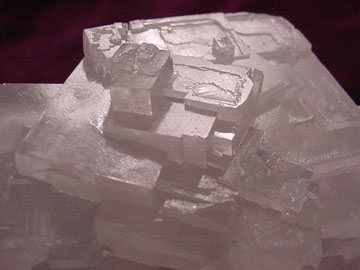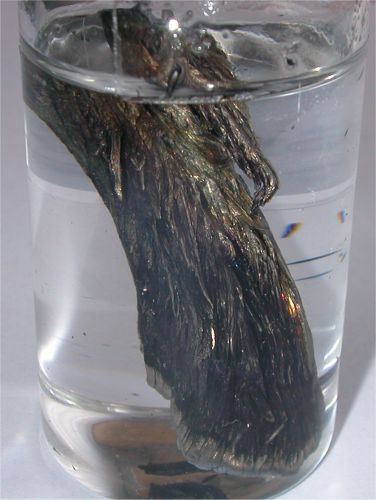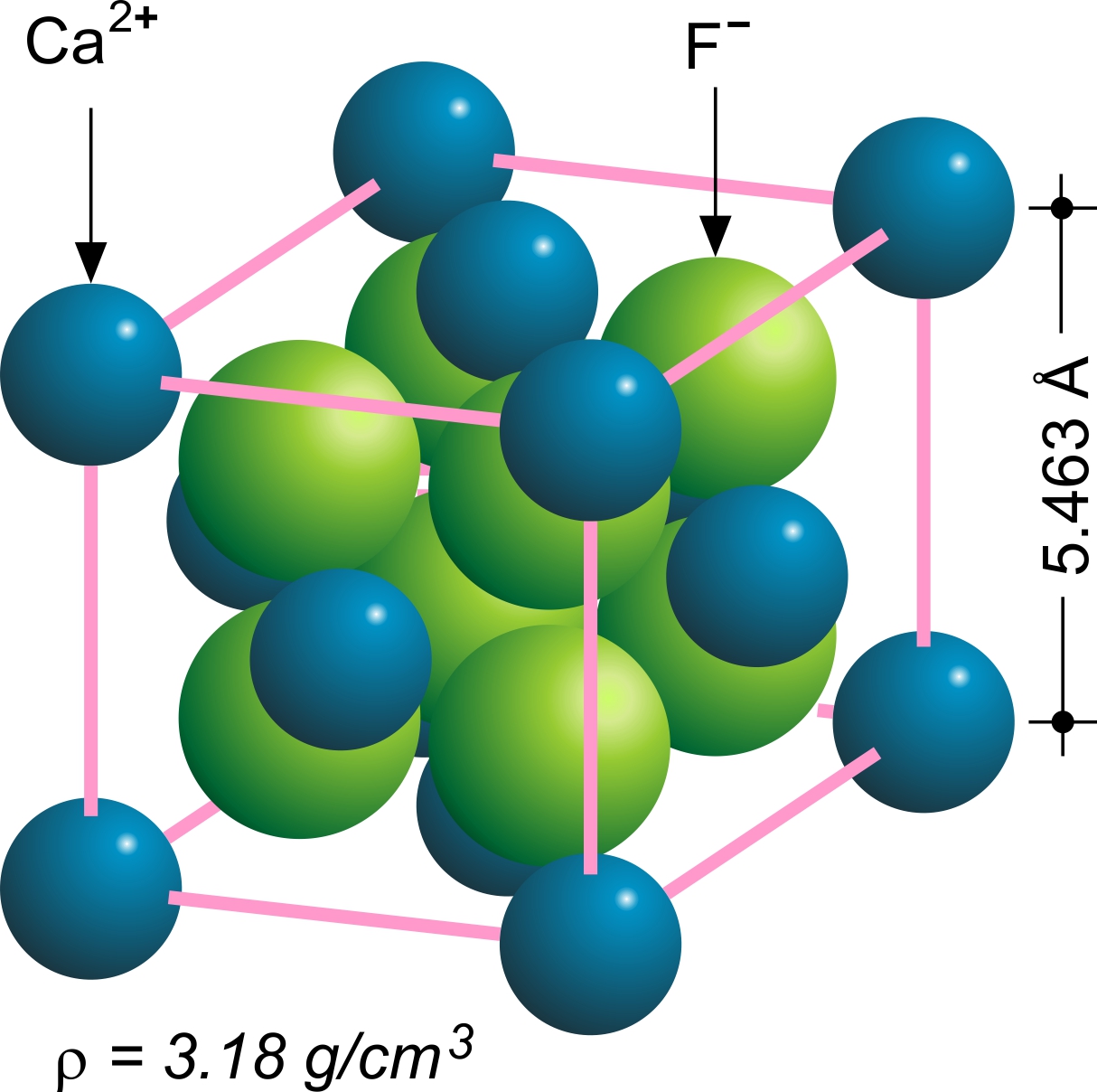|
Strontiofluorite
Strontiofluorite is a halide mineral that contains the alkali earth metal strontium and the halogen fluorine, a form of strontium fluoride. It can be considered a strontium-analogue of fluorite, which contains calcium as the dominant cation instead. It is translucent and pale gray in colour. It appears as cubo-octahedral crystals up to a size of 0.5 mm. It is found in association with astrophyllite, burbankite, chlorbartonite, fluorapatite, fluorite, lamprophyllite, polezhaevaite-(Ce) and villiaumite Villiaumite is a rare halide mineral composed of sodium fluoride, Na F. It is very soluble in water and some specimens fluoresce under long and short wave ultraviolet light. It has a Mohs hardness of 2.5 and is usually red, pink, or orange in col .... References Strontium minerals Fluorine minerals ... [...More Info...] [...Related Items...] OR: [Wikipedia] [Google] [Baidu] |
Strontium Fluoride
Strontium fluoride, SrF2, also called strontium difluoride and strontium(II) fluoride, is a fluoride of strontium. It is a brittle white crystalline solid. In nature, it appears as the very rare mineral strontiofluorite. Preparation Strontium fluoride is prepared by the action of hydrofluoric acid on strontium carbonate. Structure The solid adopts the fluorite structure. In the vapour phase the SrF2 molecule is non-linear with an F−Sr−F angle of approximately 120°. This is an exception to VSEPR theory which would predict a linear structure. Ab initio calculations have been cited to propose that contributions from d orbitals in the shell below the valence shell are responsible. Another proposal is that polarization of the electron core of the strontium atom creates an approximately tetrahedral distribution of charge that interacts with the Sr−F bonds.Core Distortions and Geometries of the Difluorides and Dihydrides of Ca, Sr, and Ba Bytheway I, Gillespie RJ, Tang TH, Bade ... [...More Info...] [...Related Items...] OR: [Wikipedia] [Google] [Baidu] |
Halide Mineral
Halide minerals are those minerals with a dominant halide anion (, , and ). Complex halide minerals may also have polyatomic anions. Examples include the following: * Atacamite *Avogadrite (K,Cs)BF *Bararite (β) *Bischofite * Brüggenite * Calomel * Carnallite * Carnallite *Cerargyrite/ Horn silver AgCl * Chlorargyrite AgCl, bromargyrite AgBr, and iodargyrite AgI * Cryolite * Cryptohalite (a) . * Dietzeite * Eglestonite * Embolite AgCl+AgBr * [...More Info...] [...Related Items...] OR: [Wikipedia] [Google] [Baidu] |
Halide Minerals
Halide minerals are those minerals with a dominant halide anion (, , and ). Complex halide minerals may also have polyatomic anions. Examples include the following: * Atacamite *Avogadrite (K,Cs)BF *Bararite (β) *Bischofite * Brüggenite * Calomel * Carnallite * Carnallite *Cerargyrite/ Horn silver AgCl * Chlorargyrite AgCl, bromargyrite AgBr, and iodargyrite AgI * Cryolite * Cryptohalite (a) Vanadates), 09 Silicates: * ''neso-'': insular (from Greek , "island") * ''soro-'': grouped (from Greek , "heap, pile, mound") * ''cyclo-'': ringed (from Greek , "circle") * ''ino-'': chained (from Greek , "fibre", rom Ancient Greek * ''phyllo-'': sheeted (from Greek , "leaf") * ''tecto-'': of three-dimensional framework (from Greek , "of building") ;Nickel–Strunz code scheme ''NN.XY.##x'': * ''NN'': Nickel–Strunz mineral class number * ''X'': Nickel–Strunz mineral division letter * ''Y'': Nickel–Strunz mineral family letter * ''##x'': Nickel–Strunz mineral/gr ... [...More Info...] [...Related Items...] OR: [Wikipedia] [Google] [Baidu] |
Strontium
Strontium is the chemical element with the symbol Sr and atomic number 38. An alkaline earth metal, strontium is a soft silver-white yellowish metallic element that is highly chemically reactive. The metal forms a dark oxide layer when it is exposed to air. Strontium has physical and chemical properties similar to those of its two vertical neighbors in the periodic table, calcium and barium. It occurs naturally mainly in the minerals celestine and strontianite, and is mostly mined from these. Both strontium and strontianite are named after Strontian, a village in Scotland near which the mineral was discovered in 1790 by Adair Crawford and William Cruickshank; it was identified as a new element the next year from its crimson-red flame test color. Strontium was first isolated as a metal in 1808 by Humphry Davy using the then newly discovered process of electrolysis. During the 19th century, strontium was mostly used in the production of sugar from sugar beets (see str ... [...More Info...] [...Related Items...] OR: [Wikipedia] [Google] [Baidu] |
Fluorine
Fluorine is a chemical element with the symbol F and atomic number 9. It is the lightest halogen and exists at standard conditions as a highly toxic, pale yellow diatomic gas. As the most electronegative reactive element, it is extremely reactive, as it reacts with all other elements except for the light inert gases. Among the elements, fluorine ranks 24th in universal abundance and 13th in terrestrial abundance. Fluorite, the primary mineral source of fluorine which gave the element its name, was first described in 1529; as it was added to metal ores to lower their melting points for smelting, the Latin verb meaning 'flow' gave the mineral its name. Proposed as an element in 1810, fluorine proved difficult and dangerous to separate from its compounds, and several early experimenters died or sustained injuries from their attempts. Only in 1886 did French chemist Henri Moissan isolate elemental fluorine using low-temperature electrolysis, a process still employed for moder ... [...More Info...] [...Related Items...] OR: [Wikipedia] [Google] [Baidu] |
Fluorite
Fluorite (also called fluorspar) is the mineral form of calcium fluoride, CaF2. It belongs to the halide minerals. It crystallizes in isometric cubic habit, although octahedral and more complex isometric forms are not uncommon. The Mohs scale of mineral hardness, based on scratch hardness comparison, defines value 4 as fluorite. Pure fluorite is colourless and transparent, both in visible and ultraviolet light, but impurities usually make it a colorful mineral and the stone has ornamental and lapidary uses. Industrially, fluorite is used as a flux for smelting, and in the production of certain glasses and enamels. The purest grades of fluorite are a source of fluoride for hydrofluoric acid manufacture, which is the intermediate source of most fluorine-containing fine chemicals. Optically clear transparent fluorite lenses have low dispersion, so lenses made from it exhibit less chromatic aberration, making them valuable in microscopes and telescopes. Fluorite optics ar ... [...More Info...] [...Related Items...] OR: [Wikipedia] [Google] [Baidu] |
Calcium
Calcium is a chemical element with the symbol Ca and atomic number 20. As an alkaline earth metal, calcium is a reactive metal that forms a dark oxide-nitride layer when exposed to air. Its physical and chemical properties are most similar to its heavier homologues strontium and barium. It is the fifth most abundant element in Earth's crust, and the third most abundant metal, after iron and aluminium. The most common calcium compound on Earth is calcium carbonate, found in limestone and the fossilised remnants of early sea life; gypsum, anhydrite, fluorite, and apatite are also sources of calcium. The name derives from Latin ''calx'' " lime", which was obtained from heating limestone. Some calcium compounds were known to the ancients, though their chemistry was unknown until the seventeenth century. Pure calcium was isolated in 1808 via electrolysis of its oxide by Humphry Davy, who named the element. Calcium compounds are widely used in many industries: in foods and p ... [...More Info...] [...Related Items...] OR: [Wikipedia] [Google] [Baidu] |
Astrophyllite
Astrophyllite is a very rare, brown to golden-yellow hydrous potassium iron titanium silicate mineral. Belonging to the astrophyllite group, astrophyllite may be classed either as an inosilicate, phyllosilicate, or an intermediate between the two. It forms an isomorphous series with kupletskite, to which it is visually identical and often intimately associated. Astrophyllite is of interest primarily to scientists and collectors. Heavy, soft and fragile, astrophyllite typically forms as ''bladed'', radiating ''stellate'' aggregates. It is this crystal habit that gives astrophyllite its name, from the Greek words ''astron'' meaning "star" and ''phyllon'' meaning "leaf". Its great submetallic gleam and darkness contrast sharply with the light (felsic) matrix the mineral is regularly found within. Astrophyllite is usually opaque to translucent, but may be transparent in thin specimens. As the crystals themselves possess perfect cleavage, they are typically left ''in situ'', the ent ... [...More Info...] [...Related Items...] OR: [Wikipedia] [Google] [Baidu] |
Fluorapatite
Fluorapatite, often with the alternate spelling of fluoroapatite, is a phosphate mineral with the formula Ca5(PO4)3F (calcium fluorophosphate). Fluorapatite is a hard crystalline solid. Although samples can have various color (green, brown, blue, yellow, violet, or colorless), the pure mineral is colorless, as expected for a material lacking transition metals. Along with hydroxylapatite, it can be a component of tooth enamel, but for industrial use both minerals are mined in the form of phosphate rock, whose usual mineral composition is primarily fluorapatite but often with significant amounts of the other. Fluorapatite crystallizes in a hexagonal crystal system. It is often combined as a solid solution with hydroxylapatite (Ca5(PO4)3OH or Ca10(PO4)6(OH)2) in biological matrices. Chlorapatite (Ca5(PO4)3Cl) is another related structure. Industrially, the mineral is an important source of both phosphoric and hydrofluoric acids. Fluorapatite as a mineral is the most co ... [...More Info...] [...Related Items...] OR: [Wikipedia] [Google] [Baidu] |
Lamprophyllite
Lamprophyllite (named for its lustrous cleavage) is a rare, but widespread mineral Ti-silicate mineral usually found in intrusive agpasitic igneous rocks. Yellow, reddish brown, Vitreous, Pearly. Lamprophyllite formula is (Sr,Ba,K,Na)2Na(Na,Fe,Mn)2Ti[Ti2O2(Si2O7)2[(O, OH,F)2 . Full isomorphic range between lampropyllite and baritollalpropyllite exist. The general crystal-chemical formula for lampropyllite-related minerals can be written as A2[(M1)(M2)2(M3)X2] 5] L2(Si2O7)2O2], where the contents of the O and H sheets are given in square brackets in this order and A = Sr, Ba,K, Na; M1 = Na, Mn2+; M2 = Na, Mn2+, Fe2+, Ca; M3 = Ti, Mn2+, Mg, Fe3+, Fe2+; L = Ti, Fe3+; X = OH, O, F. Lamprophyllite is monoclinic, The mineral also has an orthorhombic polytype In materials science, polymorphism describes the existence of a solid material in more than one form or crystal structure. Polymorphism is a form of isomerism. Any crystalline material can exhibit the phenomenon. Allotropy re ... [...More Info...] [...Related Items...] OR: [Wikipedia] [Google] [Baidu] |






